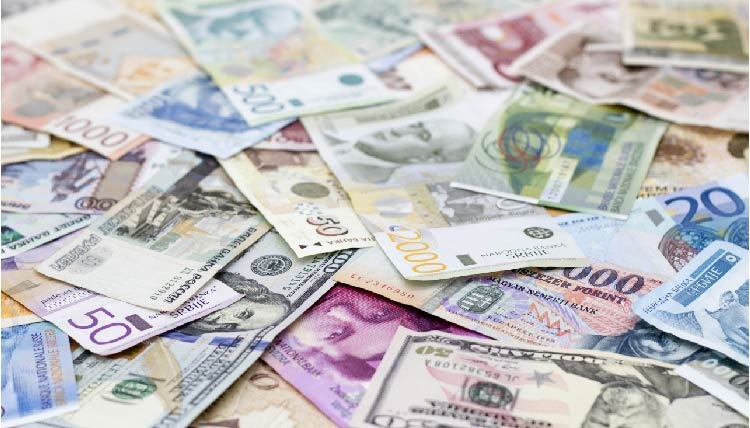The EU’s Recovery Plan: What It Means for Pharma
Leaders from the European Union (EU) have reached an historic agreement in breadth and size to create a EUR 750 billion ($864 billion) recovery fund to rebuild EU economies in the wake of the COVID-19 pandemic and have agreed on a new long-term EU budget of nearly EUR 1.1 trillion ($1.27 trillion) for 2021–2027. What is the plan, and what is the impact on the pharma industry?
Inside the EU’s COVID-19 recovery plan and long-term budget
EU leaders agreed this week (July 21, 2021) to a comprehensive package of EUR 1.8243 trillion ($2.102 trillion), which combines a multiannual financial framework (MFF), referring to a new long-term budget EU budget for 2021–2027, and a recovery plan in response to the COVID-19 pandemic, referred to as the next-generation EU (NGEU) instrument. The EUR 1.8-trillion ($2.1 trillion) package represents more than 5% of the EU 27 member states’ gross domestic product (GDP).
 |
|
Charles Michel |
“We have reached a deal on the recovery package and the European budget,” said Charles Michel, President of the European Council, which is responsible for defining the EU’s overall political direction and priorities, after the Special European Council meetings that concluded this week (held July 17–21, 2020). The members of the European Council include the heads of state or government of the 27 EU member states, the European Council President, and the President of the European Commission. “These were, of course, difficult negotiations in very difficult times for all Europeans. A marathon which ended in success for all 27 member states, but especially for the people. This is a good deal. This is a strong deal. And most importantly, this is the right deal for Europe, right now.”
The NGEU recovery plan allows the European Commission to borrow up to EUR 750 billion ($864 billion) on the markets; EUR 390 billion ($449 billion) from the package will be distributed in the form of grants to EU member states and EU 360 billion ($415 billion) in loans. These funds may be used for back-to-back loans and for expenditures channeled through the MFF programs, i.e., the long-term EU budget plan. Capital raised on the financial markets will be repaid by 2058.
The recovery plan ensures the money goes to the countries and sectors most affected by the COVID-19 crisis: 70% under the grants of the Recovery and Resilience Facility (RRF) will be committed in 2021 and 2022, and 30% will be committed in 2023. Allocations from the RRF in 2021–2022 will be established according to the European Commission’s allocation criteria taking into account EU member states’ respective living standards, size, and unemployment levels. For the 2023 allocations, the unemployment criterion will be replaced by the drop in GDP in 2020 and 2021.
Falling GDP: a call for action
The impetus for EU leaders to act on a recovery and budget plan were clear as the EU, like other economies, faces a strong projected drop in GDP this year. The European Commission reported earlier this month (July 2020) that it expects the EU economy to shrink 8.3% in 2020, around one percentage point worse than had been projected in the European Commission’s forecast made this spring (spring 2020). Paolo Gentiloni, Member Designate of the European Commission in charge of Economy, pointed out in comments earlier this month (July 2020) the historical decline in Europe’s economy in the second quarter of this year (2020), which is expected to be the worst drop in GDP since the Second World War. “The hit to economic activity was so strong that a partial rebound in the second half of the year will not be able to lift the annual growth rate in a significant way,” said Gentiloni in a July 7, 2020 statement.
 |
|
Paolo Gentiloni |
The downward trajectory in GDP in the EU is also seen in GDP on a global basis. Real global output outside the EU is estimated to have contracted by more than 3% in the first quarter in 2020 (quarter-on-quarter). “The decline in the first quarter mostly reflects measures to contain the virus taken in China,” said Gentiloni in his statement. “Most other countries implemented containment measures only late in the first quarter and in the second quarter as the epidemic became global. Therefore, the output collapse in the second quarter of 2020 is likely to be much deeper at a global level,” he said.
Gentiloni said that business activity is likely to have reached a trough in April reflected by the global composite Purchasing Managers Index that reached an all-time low of 26.2, far below the threshold of 50, which separates expansion from contraction. However, data released in late June and early July (2020) point to a moderate improvement.
Overall, real global GDP (excluding the EU) is forecast to contract by around 4% in 2020 before a recovery of 5% in 2021, according to information from the European Commission. This implies that by the end of next year (2021), global GDP would recover above the 2019 level, but remain substantially below the pre-pandemic global growth trajectory. For the EU, “[t]he European economy is slowly moving from a state of ‘hibernation’ to a ‘new normal,” said Gentiloni in his July 2020 statement. For 2021, coming off negative GDP growth in 2020, GDP in the EU is expected to increase by 5.8% in 2021, according to information from the European Commission. The economy of each EU member state is expected to contract in 2020 and to bounce back 2021. In 2020, relatively strong GDP contractions are projected for France (-10.6%), Italy (-11.2%), and Spain (10.9%), whereas lesser contractions are expected for Germany (-6.3%), the Netherlands (-6.8%), and Poland (-4.6%).
EU calls for recovery and resilience plans; outlines new funding sources
 |
|
Ursula von der Leyen |
As part of its COVID-19 recovery plan and in line with the principles of good governance, EU member states are required to prepare national recovery and resilience plans for 2021–2023. These plans will need to be consistent with the country-specific recommendations and contribute to green and digital transitions. More specifically, the plans are required to boost growth and jobs and reinforce the “economic and social resilience” of EU countries. The plans will be reviewed in 2022. The assessment of these plans will be approved by the European Council by a qualified majority vote on a proposal by the European Commission. The disbursement of grants will take place only if the agreed milestones and targets set out in the recovery and resilience plans are fulfilled.
To fund these measures, EU leaders agreed to provide the EU with new resources to pay back funds raised under the COVID-19 recovery plan. These resources include a new plastic levy that will be introduced in 2021. The European Commission is also expected to put forward a proposal for a carbon-adjustment measure and a digital levy, both of which would be introduced by the end of 2022. The European Commission would then come back with a revised proposal on the EU’s emissions trading scheme, which caps the amount of greenhouse gases companies are allowed to emit without facing fines, by possibly extending it to the aviation and maritime sectors. There may also be other new resources, such as a financial transaction tax. The proceeds of the new resources introduced after 2021 will be used for early repayment of borrowing for the COVID recovery plan. A EUR-5 billion ($5.76-billion) Brexit reserve will also be established to support the EU member states and economic sectors hardest hit by Brexit.
The next step in the process is to secure approval from the European Parliament, the EU’s legislative body. “Europe as a whole has now a big chance to come out stronger from the crisis,” said Ursula von der Leyen, President of the European Commission, in a July 21, 2020 statement. “Today, we have taken a historic step, we all can be proud of. But another important step remains ahead of us. First and foremost, we now have to work with the European Parliament to secure agreement. We have a lot of work ahead of us, but tonight is a big step forward towards recovery.”
Impact on pharma
The EU’s recovery plan and long-term budget proposal is an important infusion of funding to EU member states to fund operations, including their healthcare systems, which have been pressured by the COVID-19 pandemic. Given the economic uncertainty caused by the COVID-19 pandemic and its aftermath, however, whether funding levels will be sufficient has yet to be seen. The EU5 (France, Germany, Italy, Spain, and the UK) is expected to hold a projected market share of 15% of the global pharmaceutical market by 2022, second behind the US (43%) and ahead of China (12%) although growth in the EU’s pharmaceutical industry is expected to be flat, according to information from IQVIA. As in the US, the EU has experienced a decline in interactions between physicians and patients despite the growing use of telemedicine during the COVID-19 pandemic and the volume of diagnostic procedures. As a result, the number of new prescriptions issued have declined significantly (1).
The EU funding plan, both short term in its COVID-19 recovery effort and longer term in the EU’s budget for 2021–2027, is a requisite for the EU to proceed with the European Commission’s Pharmaceutical Strategy for Europe, which sets forth a roadmap for innovation, manufacturing, and medicines supply in Europe, which includes setting the trajectory for the EU’s pharma industry as it recovers and proceeds forward in the wake the COVID-19 pandemic. The European Commission had put on its agenda for 2020 a work program to develop a pharmaceutical strategy for the EU, and EU health ministers met earlier this year (May 2020) to discuss the strategy and to begin to develop a five-year plan, for which certain key goals, such as providing access to medicines at affordable prices and ensuring the supply of medicines, has taken on greater importance in the wake of issues arising from the COVID-19 pandemic. A public consultation period is open through mid-September (September 2020), and the European Commission is seeking to adopt a final strategy by the end of this year (2020).
The push to reform the EU’s healthcare system, including its supply chain, is being voiced by a body of external forces. Chief among them is EU4Health, a dedicated funding program for 2021-2027 to build “resilient health systems in the EU to better equip us for the future,” and which calls for an investment of EUR 9.4 billion ($10.9 billion) in EU funding, and which is supported by a compilation of healthcare and patient-advocacy groups in the EU.
Pharmaceutical industry trade groups, including the European Federation of Pharmaceutical Industries and Associations, which represents innovator, research-based pharmaceutical companies in Europe, and Medicines for Europe, which represents generic and biosimilar manufacturers in the EU, are also seeking action as it relates to the EU’s Pharmaceutical Strategy for Europe.
“The outbreak of COVID-19 in Europe acted as a lightning rod for change,” said Medicines for Europe President, Christoph Stoller, in a July 9, 2020 statement. “If one positive has come from the experience, it is the value of EU partnership and coordination… But we cannot waste the opportunity to learn from this experience and strengthen EU pharma policy to support a resilient and diversified industry, so the system functions well in times of a pandemic and beyond. We will be advocating for an EU pharmaceutical strategy that prioritizes equitable and sustainable access to medicines for all patients in Europe and a structured dialogue and framework that enables industry to deliver on that vision.”
The outbreak of COVID-19 in Europe also has sparked a renewed debate about strengthening medicines supply chains and manufacturing in Europe. “The first step should be to support existing manufacturing capacity and be innovative to support its expansion,” said Medicines for Europe in the July 9, 2020 statement. “This includes a mix of smart policy making in the following key areas: investment, competitiveness, market-based incentives and a modernized regulatory framework.”
One additional impact from the EU’s COVID-19 recovery plan and long-term budget on the pharmaceutical manufacturing value chain is the advancement of the EU’s climate goals, including achieving climate neutrality by 2050. Thirty percent of the total expenditure from both the EU’s 2021-2027 budget and its COVID-19 recovery plan will target climate-related projects and comply with the EU’s objective of climate neutrality by 2050, the EU’s 2030 climate targets, and the Paris Agreement, the agreement within the United Nations Framework Convention on Climate Change dealing with greenhouse-gas-emissions mitigation, adaptation, and finance.
The advancement of the EU’s green policy, combined with a revitalization of the European chemical manufacturing sector and a strengthening of Europe’s chemical production capacity, including for active pharmaceutical ingredients (APIs), are important goals articulated by the EU’s chemical manufacturing sector. “Our priority is to go through the green transition while strengthening our production capacity in Europe,” said Marco Mensink, Director-General of the European Chemical Industry Council (CEFIC), which represents chemical manufacturers in Europe, in a July 13, 2020 statement in advance of EU leaders meeting to arrive at an EU recovery plan and long-term budget. “It will only be possible if the EU keeps its industries competitive throughout the transition. This is why the EU Recovery Plan must be accompanied by a strong Industrial Strategy based on the European Green Deal vision. This will ensure that the recovery funding supports a resilient industrial transformation. It also means the upcoming Chemical Strategy for Sustainability needs to be assessed in full on its impact on the EU chemical industry.”
In particular, the EU chemical industry is calling for investments into building renovation, clean mobility, development of all forms of clean hydrogen, chemical recycling, carbon capture and storage and carbon capture and utilization. It is also supporting the EU4Health program that supports the relaunch of the EU production of APIs and strengthens procurement of vital medicines, medical devices and personal protective equipment.
Reference
1. J. Miller, “Pandemic Complicates an Already Challenging Outlook for the Global Pharma Industry,” DCAT Value Chain Insights, July 15, 2020.






